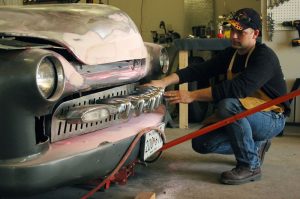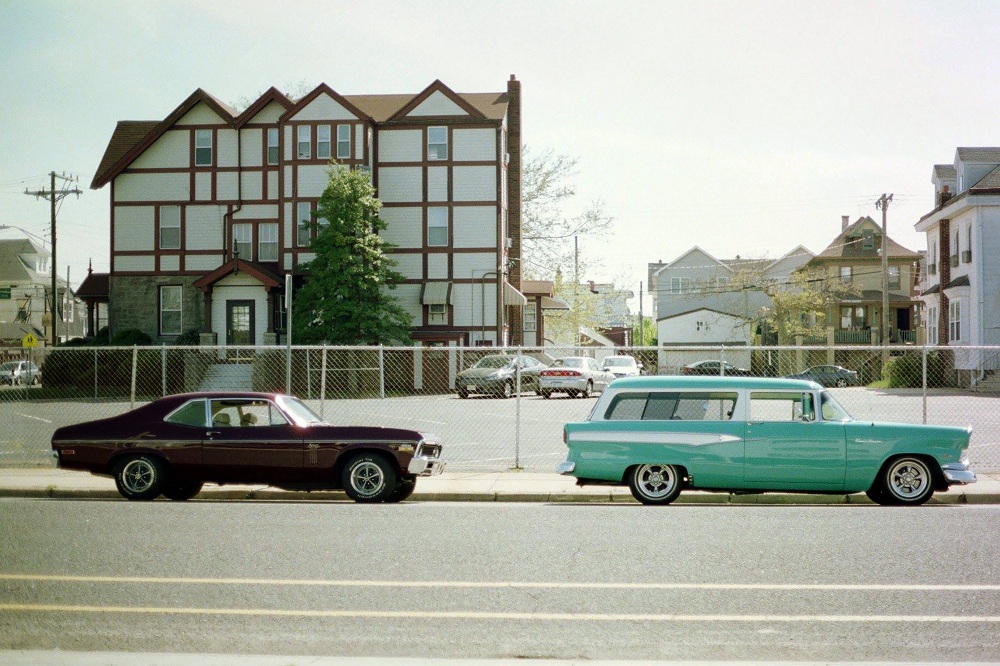Some people restore classic cars for recreation; others do so to add value to a classic find when they decide to sell.
Regardless, restoring a classic car is a great way to make one’s self a part of automotive history. This is especially the case for those who have found models that are just about extinct.
Whether you’re a hobbyist or a person who’s on the lookout for profit, it is important to make the most of your purchase by doing car restoration the right way. Here are some of the basics you need to cover:
Decide on the type of restoration
Before you start working on your restoration project, make sure you have a clear idea of what type of restoration you want to pursue. There are four major types of restoration: The Driver Restoration, Street Show Restoration, Show Car Restoration, and Concourse.
 The most basic type of restoration is called Driver Restoration. At this level, you will simply restore the car to make it operational again.
The most basic type of restoration is called Driver Restoration. At this level, you will simply restore the car to make it operational again.
The second type of restoration is called Street Show Restoration. At this level, you are not just making the car operational again. Rather, you are also repairing some major and minor aesthetic issues.
The third type of restoration is called Show Car Restoration. This level requires some professional repairs. Classic cars that were restored this way are rarely used for driving around.
Concourse is the fourth and final level. At this level, you are restoring classic cars for the purpose of putting them in a private collection. This level is the most difficult to maintain, therefore it requires a high level of professional expertise which the other types do not.
Scout for great places where you can find missing car parts
Finding replacements for antique car parts is an important thing to consider. Be on the lookout for the best places that supply the car parts you are looking for.
Another tip that would be helpful is to be sure of the particular spare part that you are looking for. Having a clear idea of what you are looking for will make it easier to look around and make inquiries to possible suppliers.
Check for safety equipment
 Is the car at par with modern standards in safety? You have to determine this early on because in most cases, classic cars are lagging behind when it comes to safety equipment. Check for airbags and have them installed. Replace seat belts if needed.
Is the car at par with modern standards in safety? You have to determine this early on because in most cases, classic cars are lagging behind when it comes to safety equipment. Check for airbags and have them installed. Replace seat belts if needed.
Create a checklist of the necessary safety equipment and tick each item on the list once they are done. This will help you make sure that your car is all good where passenger safety is concerned.
Do your research about classic cars
Classic cars are not comparable to the kind of cars that we have today. They operate differently. Plus, the parts were put together in a different manner as well. To keep up with classic car restoration, you need to be well-versed about the nitty-gritty details involving classic cars.
Read up and do your research. Make sure to read several resources to confirm that the information you have on hand is valid, relevant, and credible.
Set parameters
 More than anything else, you have to know what your limits are. Do the math on your finances so you’ll know how much you can afford when it comes to restoring a classic car.
More than anything else, you have to know what your limits are. Do the math on your finances so you’ll know how much you can afford when it comes to restoring a classic car.
You have to be careful about how much you spend on your restoration project. In most cases, the money you spent on the project will not find its way back to you.
While being able to sell the restored classic car is a possibility, that possibility could be a remote one. Those that were sold for a large sum were mostly the rare models.
Learn to negotiate
If you’re going over your budget, decide whether you can still delay the project until you can spend more for the restoration costs or simply make do with simpler, more basic car parts which will likely incur lower costs.
Join clubs
Classic car restoration is becoming more popular as we speak. With a few clicks, you can easily find online communities and organizations that support and promote classic car restoration.
Seek out these groups and find one that you would feel comfortable to be part of. Affiliations with these clubs and organizations will help you build your network and find a support group that would give you advice, and help you manage the different facets of classic car restoration.
Manage your time well
 Juggling many different things at the same time could be a challenge, especially if you put classic car restoration along with it.
Juggling many different things at the same time could be a challenge, especially if you put classic car restoration along with it.
When you work on your car restoration project, make sure you know what your priorities are. Make time for car restoration, but do not put your other priorities out of the picture, either.
Be organized
Take pictures for documentation. Create your to-do list. Keep track of your progress. Classic car restoration should be a fun process, but it still requires some semblance of order.
Keep things organized so it would be easy to look up what you need at the moment – be it the name and address of a supplier or tips and recommendations from the experts.
Keep your eyes open
There are endless possibilities, so don’t plan everything to a fault and then get stressed when things don’t go as planned. Don’t get beaten up by setbacks. Just enjoy restoring your classic car and know that your hard work will pay off when you see the final outcome.
Some people restore classic cars in the hopes of selling it for a hefty sum. This is a possibility, yes, But if you are restoring your classic car solely for this purpose, you might be in for a big disappointment.
Turning your classic car restoration project into an investment is perfectly fine but it will not yield profitable returns in a short span of time. So if you are purchasing a classic car, make sure you are doing so for the right reasons.

